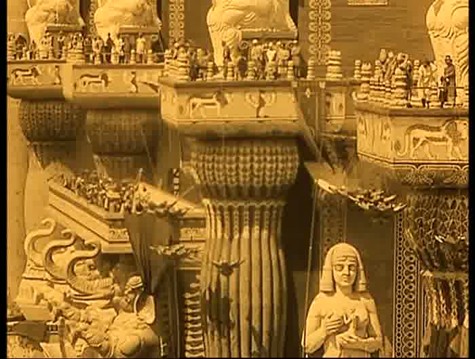Director:
D.W. GriffithCámara:
G.W. BitzerMúsica:
Carl DavisReparto:
Lillian Gish, Mae Marsh, Robert Harron, Sam De Grasse, Vera Lewis, Mary Alden, Elmo Lincoln, Olga Grey, Erich von Stroheim, Eugene Pallette, Wallace Reid (más)Streaming (1)
Sinopsis(1)
Después de El nacimiento de una nación D.W.Griffith rodó el largometraje La madre y la ley, una cinta ‘menor’ en comparación con la anterior superproducción. Griffith decidió ampliar el relato con otros tres y que el conjunto sirviese para ofrecer una visión de la conducta intolerante de la humanidad y de las graves consecuencias de la traición a través de la historia. Llevando hasta las últimas consecuencias la técnica del montaje paralelo, se podían seguir simultáneamente las cuatro historias unidas por la figura de una madre meciendo la cuna de su hijo: la caída de Babilonia, ambientada en el año 539 a. de J.C.; el martirio y muerte de Jesucristo en Judea; la masacre de la noche de San Bartolomé en la Francia de 1572, y la de la época moderna ambientada en 1914. (Divisa Home Video)
(más)Videos (1)
Reseñas (2)
The cradle of intolerance, futility, and destruction is a classic Griffith epic that conjures art on every time plane. Yet if I were to choose one epoch in which I would like to spend more than three hours, it would undoubtedly be the Babylonian epoch of 539 BC.
()
Symbolism is definitely nothing new in film, after all, one of the pioneers of film, Georges Méliès, was the one who introduced this concept to film, but it was D.W. Griffith who perfected it. The conclusion of his brilliantly contradictory epic "The Birth of a Nation" was proof of that, and the film "Intolerance" continues in that vein, with the woman rocking the cradle being a beautiful example of such film metaphor. No matter what happens, life goes on. Even when people are vile to each other, they still have hope. The storytelling format is absolutely captivating, as it alternates between four different stories, which was also the reason why the film was too demanding for the audience of that time. The jumping between stories was confusing. Let's face it, audiences today still struggle with this style of storytelling. However, D.W. Griffith once again showed his genius and ability to play with the young medium of film. What is demonstrated with the camera, editing, narration, and even with the effects, are elements that are still valid today. By the way, even the intertitles impress with their sophistication, just like the exposed breasts, which later certainly were not commonplace. The faithfulness to capturing the era in historical stories is breathtaking.
()
Galería (11)
Foto © Triangle Film Corporation



Anuncio